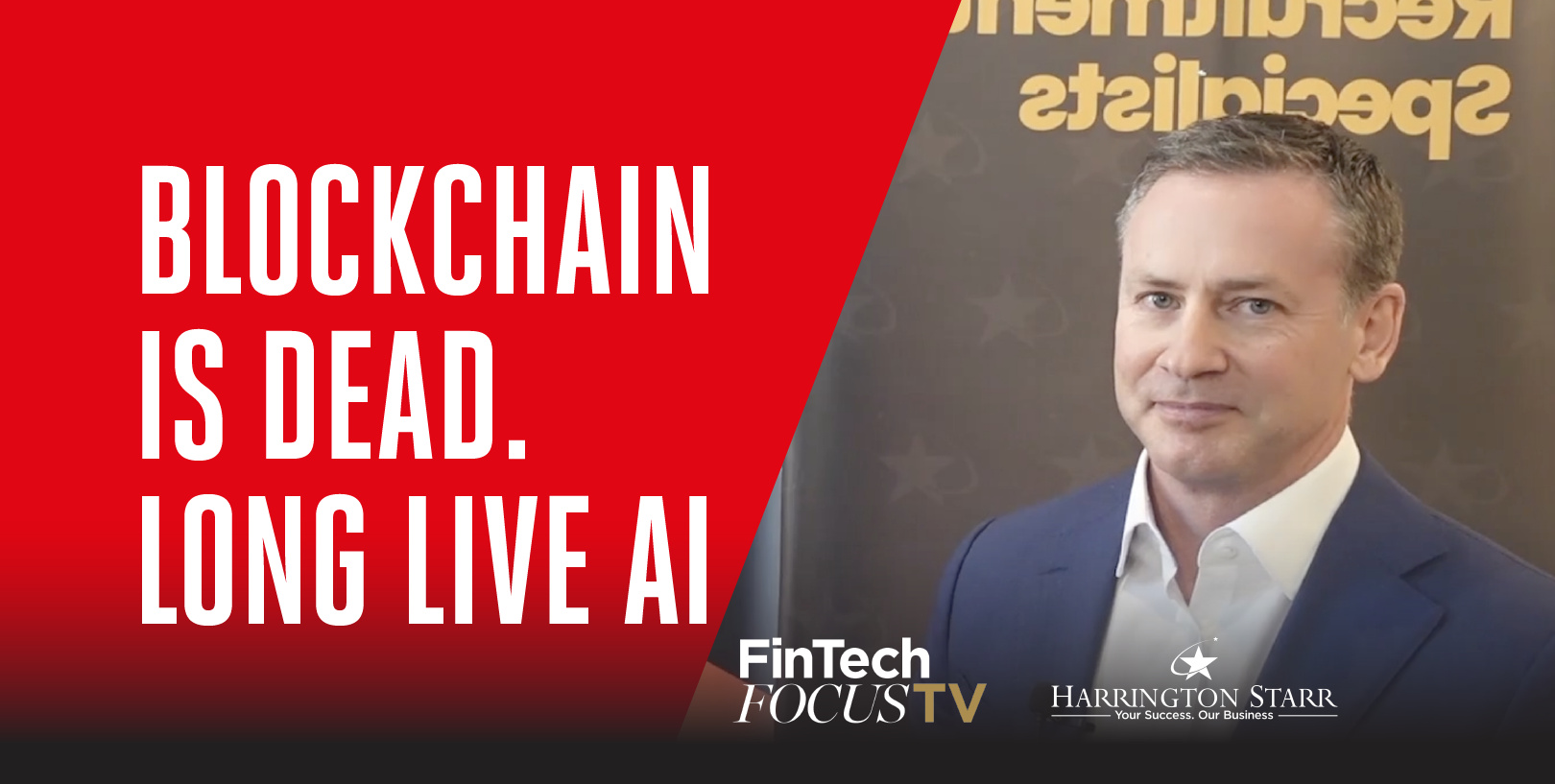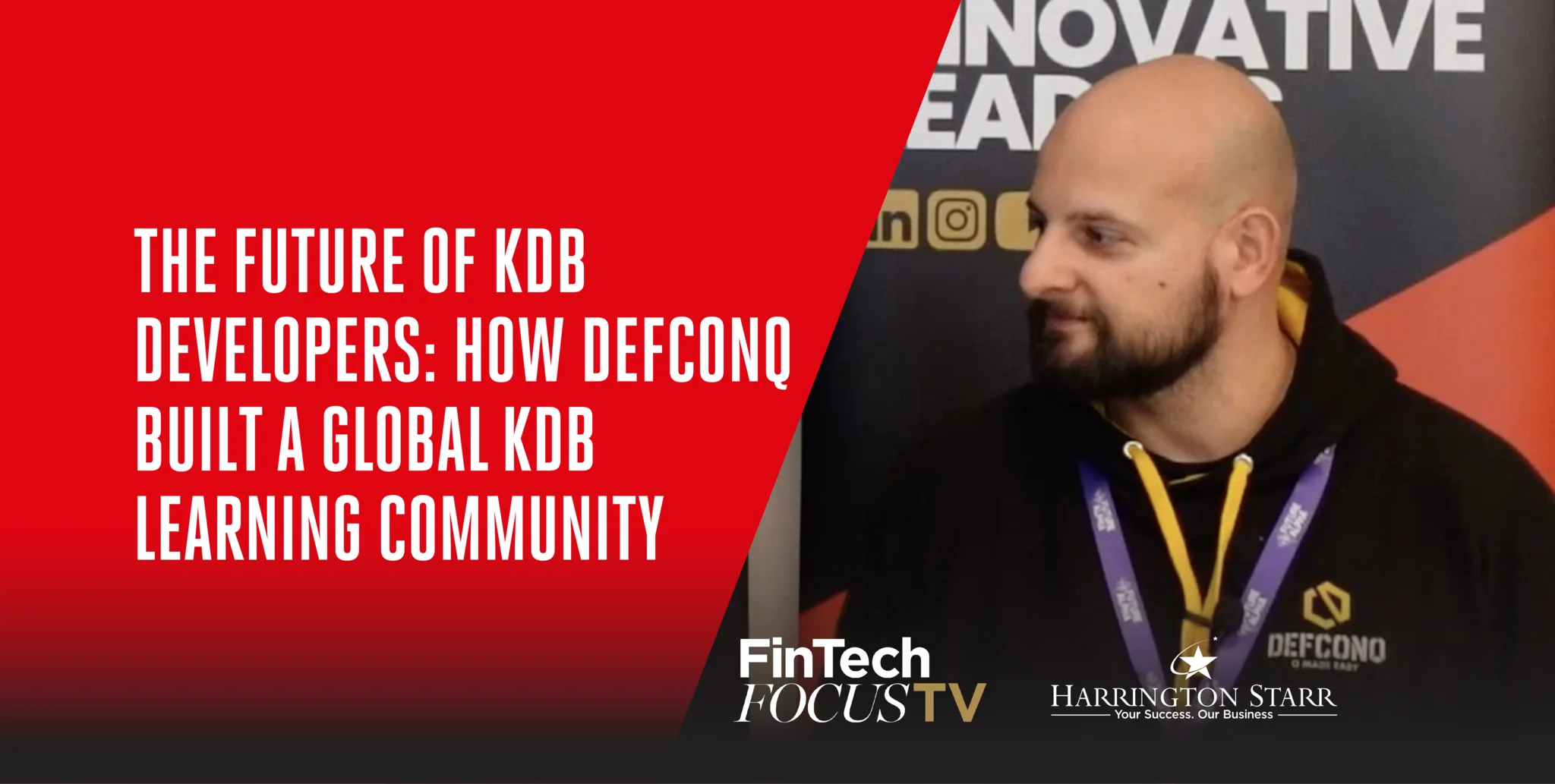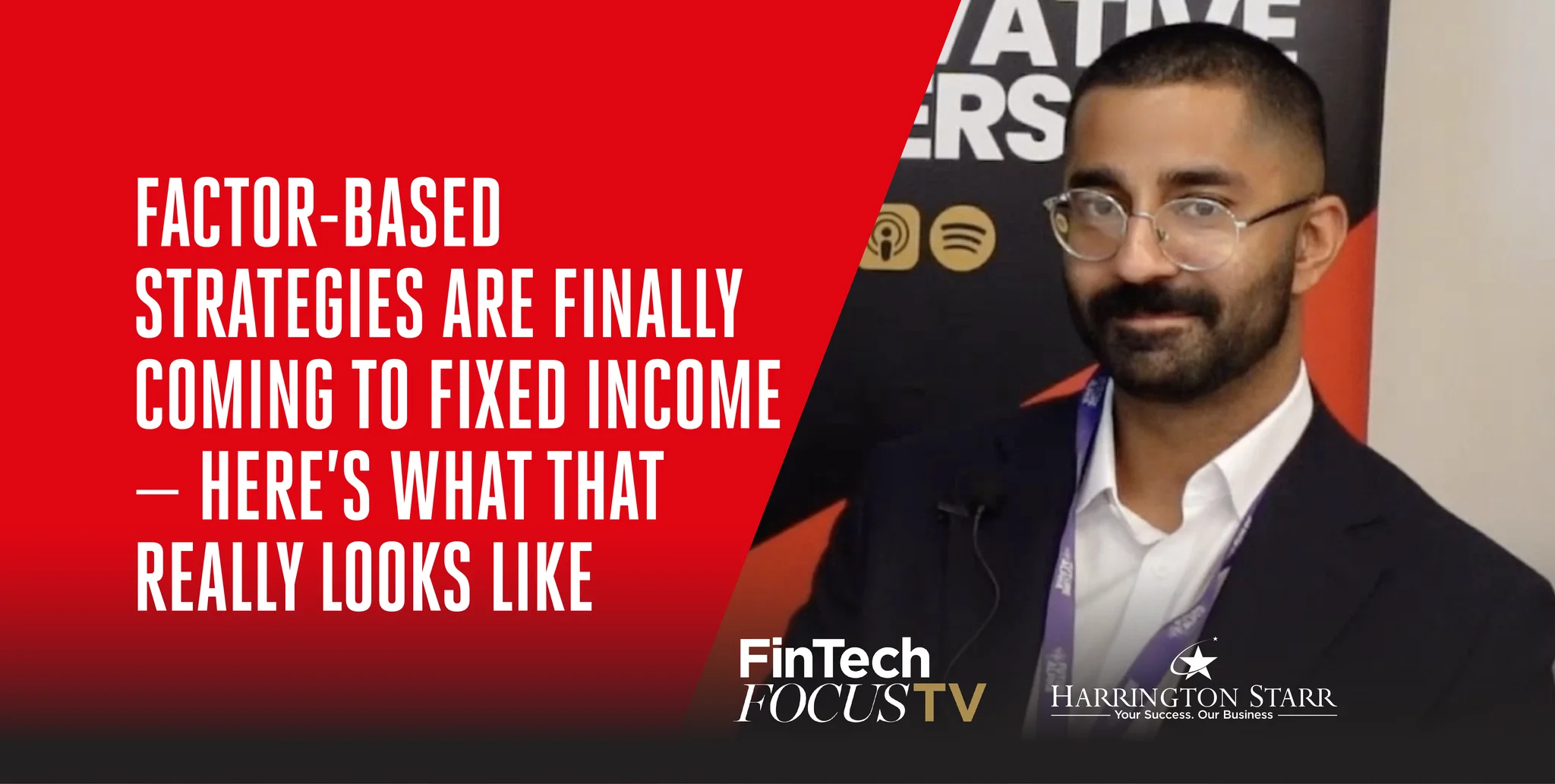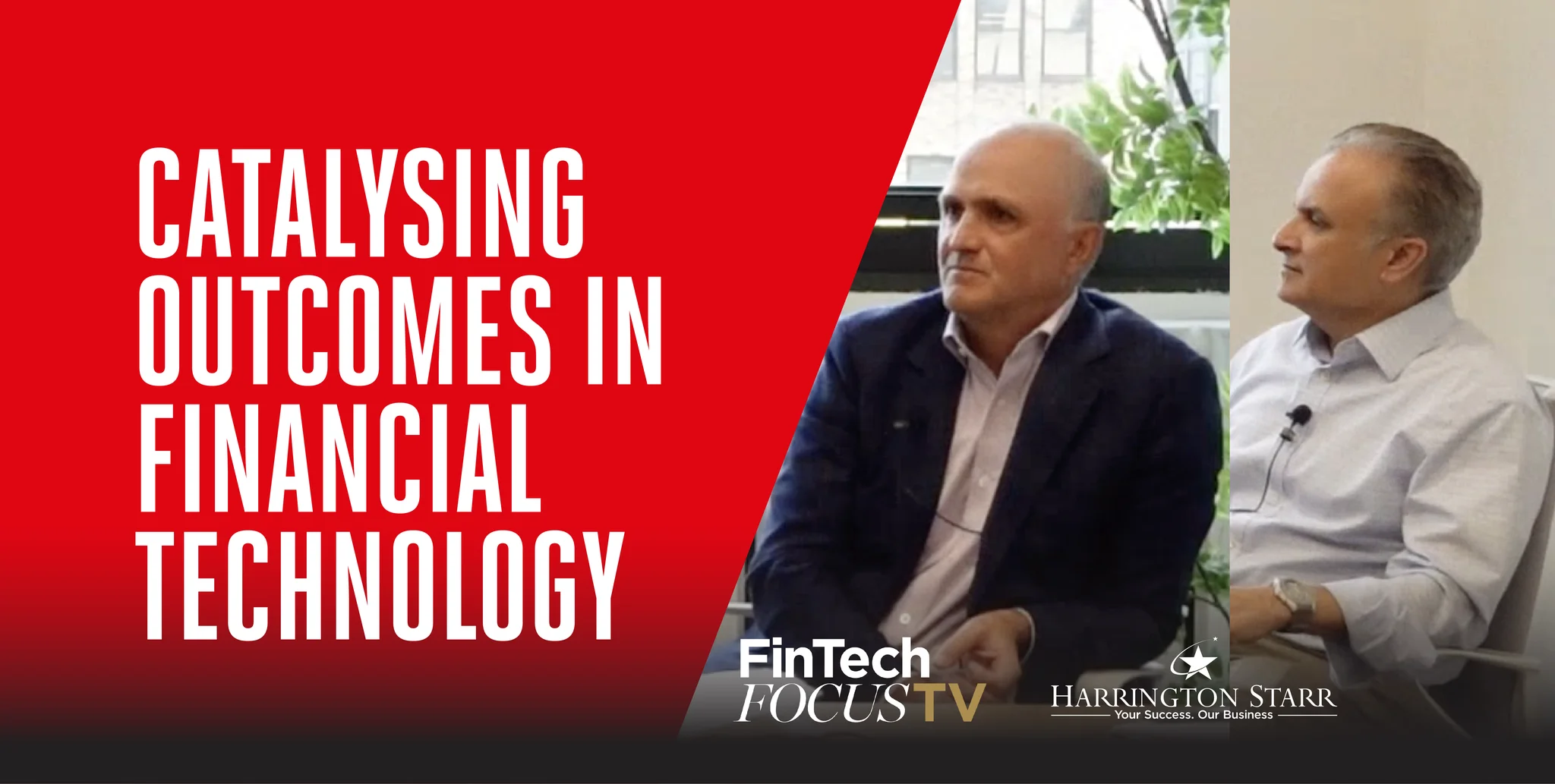Artificial Intelligence, Quant Finance, and the Future of Trading
At the heart of the FIX EMEA Trading Conference 2025 in London, the bustling floors of innovation, technology, and trading insight provided the perfect backdrop for an electrifying episode of FinTech Focus TV. Hosted by Harrington Starr CEO Toby Babb, this special episode featured a thought-provoking conversation with Tom Doris, Head of Alpha Capture at Carlson Capital, L.P.
Tom brought a seasoned yet forward-looking perspective to the discussion, delving deep into the real-world impact of artificial intelligence in financial services, the cultural divide in technological adoption between continents, and how hedge funds like Carlson Capital are deploying machine learning to stay ahead of the curve. For professionals working in or hiring within FinTech, this episode is packed with insights into the most pressing themes shaping the sector.
At Harrington Starr, a leading FinTech recruitment firm with a global presence, we recognise that talent is at the centre of the FinTech revolution. This episode underscores the skills and strategic thinking required from today’s FinTech professionals, particularly in areas such as quantitative finance, AI engineering, and data science. With increasing demand for FinTech jobs and evolving technology transforming business models, the lessons from this conversation are critical for anyone looking to build or grow a successful career in the sector.
AI in Financial Services: From Research to Real-World Application
Tom’s journey into the world of artificial intelligence began long before the phrase became a mainstream buzzword. With a PhD in computer science focused on neural networks, Tom was working on AI before it was seen as commercially viable. After time spent in the tech world, he transitioned into quantitative finance, a space in which machine learning and AI began to reveal powerful potential for optimising decision-making and predicting market behaviours.
He later co-founded OTAS Technologies, a business that offered market data analytics powered by AI and anomaly detection. These tools were designed to provide insights to both buy-side and sell-side traders. Now, in his role as Head of Alpha Capture at Carlson Capital, L.P., Tom is once again applying advanced machine learning techniques internally at a hedge fund, demonstrating how AI has moved beyond hype and into everyday utility.
For professionals pursuing FinTech jobs and those in FinTech recruitment, Tom’s background exemplifies the kind of multifaceted, interdisciplinary expertise that is increasingly in demand. FinTech professionals must be able to bridge technical capabilities with commercial impact—a key lesson highlighted throughout this episode.
AI Is Delivering Beyond Expectations in Quant Finance
A standout moment in the discussion came when Tom explained how remarkably effective AI tools have become. Contrary to the scepticism often associated with emerging technologies, Tom noted that everything his team has experimented with has exceeded expectations. Even use cases that initially seemed unlikely to succeed have yielded positive results.
This optimism is not rooted in vendor marketing, but in hard, practical application. Unlike some discussions around AI in financial services—where theory often outweighs execution—Tom brought tangible examples of AI delivering value to front-office professionals. He emphasised how machine learning tools today offer fundamentally different capabilities than those available in traditional programming paradigms.
The implications for hiring in FinTech are profound. At Harrington Starr, we have seen a sharp rise in demand for candidates who understand not only how these tools work, but also how they can be operationalised. Hiring managers are no longer just seeking coders or analysts—they want adaptable, innovative minds who can make sense of ambiguity and develop smart, testable hypotheses with technology.
Breaking Through the Fear and Overthinking in FinTech
Toby and Tom touched on a recurring theme in the adoption of emerging technology: hesitation. Many organisations, particularly in financial services, find themselves paralysed by the risks associated with new tools. But Tom offered a clear solution—just build something and show that it works. Thanks to lower costs and more accessible models, the barriers to entry have never been lower. A well-constructed prompt, the right dataset, and access to a large language model are often all that’s required to create a viable solution.
Tom’s “show, don’t tell” approach to innovation is a valuable lesson for FinTech professionals and hiring managers alike. In an environment where fear of compliance breaches or reputational risk can delay innovation, the ability to create working prototypes cuts through internal debate and resistance.
In the context of FinTech recruitment, this also serves as a reminder that confidence and initiative are critical soft skills for anyone seeking FinTech jobs. Employers want people who are ready to roll up their sleeves and build, test, and refine new models—individuals who won’t shy away from ambiguity but will lean into it.
The Transatlantic Divide: How the US and Europe View AI Differently
One of the most fascinating parts of the conversation centred around the cultural differences in AI adoption between the United States and Europe. Tom explained that US-based companies are more inclined to explore and iterate, driven by a culture that rewards speed and experimentation. In contrast, European firms tend to focus more on regulatory constraints, risk, and implications before taking action.
This divergence in mindset is essential for firms operating internationally or sourcing talent across geographies. In the US, the pace of AI development is being pushed forward not only by venture capital and academia but also by geopolitical factors—namely, competition with China. With Chinese open-source models now reaching state-of-the-art performance, the race for AI supremacy has become global.
For European FinTech firms, this represents both a challenge and an opportunity. Firms that overcome cultural hesitation and embrace innovation will be well-positioned to attract top talent and achieve first-mover advantages. At Harrington Starr, we support both US and European FinTech businesses in identifying the right talent to bridge these cultural and strategic divides.
AI Agents and the Rise of Autonomous Financial Tools
With 2025 being heralded as the “Year of the Agent” in many circles, Toby asked Tom whether AI agents were starting to make their mark. Tom was cautious in his response, noting that while the concept of autonomous agents helps people visualise what large language models can do, much of the excitement around agents remains more about branding than functionality.
However, he did highlight that agents can serve as a useful conceptual model, particularly when explaining complex technology to non-specialists. For instance, the idea of an AI “agent” that carries out tasks resonates more strongly with the average professional than the intricacies of deep learning architecture.
From a FinTech staffing perspective, this highlights a growing need for communication skills. The most successful professionals are not only technically proficient but can also articulate complex ideas in accessible language—especially when working across departments, with clients, or in leadership roles.
The Curve of Constant Improvement in AI Performance
One of the most profound observations made during the episode was Tom’s explanation of how AI models are improving exponentially. If a solution is achieving a 60–70% success rate today, it’s likely to reach 90–95% accuracy within a year, just by virtue of improved models being released. This means that companies who adopt early will gain compounding advantages, while those who wait may find themselves permanently behind the curve.
Tom described this evolution as a fundamental shift in how the financial services industry must approach accuracy. Historically, the sector has demanded perfection or near-perfect results. With AI, however, approximation and iteration are part of the process. These tools improve continuously, and that improvement comes at minimal cost to the user.
For companies hiring for FinTech roles, this means the ideal candidate profile is changing. Adaptability, curiosity, and an appetite for ongoing learning are just as important as academic credentials. At Harrington Starr, we work with clients to identify professionals who combine domain expertise with a growth mindset—exactly the combination needed to succeed in this new environment.
Making Financial Data AI-Ready: A Practical Challenge
Another major takeaway from the episode was Tom’s insight into data preparation. One of the key challenges in deploying large language models in financial services is that much of the relevant data exists in numerical or matrix form—formats not inherently suitable for AI interpretation.
To overcome this, firms need to translate data into summaries and narratives that LLMs can understand. This requires a mix of domain knowledge, technical skill, and creative thinking. It’s no longer just about building models—it’s about preparing the right inputs so that models can produce meaningful outputs.
This shift is shaping new FinTech job categories focused on data abstraction, AI readiness, and applied machine learning. FinTech recruitment firms like Harrington Starr are increasingly sourcing candidates with experience in transforming raw datasets into language-based formats, providing businesses with the capability to truly capitalise on AI advancements.
Blockchain Versus AI: A Lesson in Technological Impact
Tom also offered a pointed comparison between blockchain and artificial intelligence. While blockchain generated immense excitement and funding over the past decade, it has largely failed to deliver practical, wide-scale applications. Tom described blockchain as interesting from a computer science standpoint but fundamentally a distributed ledger—useful, but not revolutionary.
AI, by contrast, is delivering immediate, tangible value across sectors, including financial services. The applications are broad, the benefits measurable, and the improvement curve exponential.
This serves as a crucial lesson for hiring managers in FinTech. Investing in the right technology—and the talent to build and scale it—can make the difference between long-term success and being caught in a hype cycle. At Harrington Starr, we help companies differentiate between talent that is speculative versus talent that delivers.
Why 2025 Is the Right Time for FinTech Firms to Embrace AI
The final part of the conversation addressed the question of timing—why is AI taking off now? Tom attributed this shift to two key enablers: the abundance of data available on the internet and the explosive growth of computing power, especially from companies like Nvidia. While the core architecture of neural networks hasn’t changed dramatically in decades, the conditions for successful deployment have never been better.
Today’s AI systems benefit from scale, speed, and infrastructure that simply didn’t exist a few years ago. This means that organisations have the opportunity to create solutions that are faster, smarter, and more responsive to market needs than ever before.
For hiring in FinTech, this signals a definitive shift. AI isn’t just a research topic—it’s a daily tool. The professionals who will shape the future of finance are already building with it, experimenting with it, and improving it.
The Final Takeaway: Experiment and Evolve
Tom ended the episode with a simple, powerful message: just try it. Whatever your crazy idea is, test it. More often than not, you’ll be surprised at how well it works. In a world where AI tools are improving daily, inaction is the real risk.
This ethos of experimentation is at the core of what Harrington Starr believes. As a FinTech recruitment agency, we partner with companies that are willing to push boundaries, embrace uncertainty, and bet on bold ideas—and we help them find the people who can bring those ideas to life.






